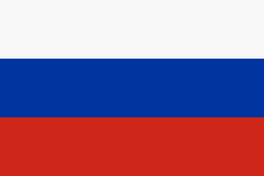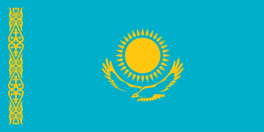Donate to Support Supercluster
Your support makes the Astronaut Database and Launch Tracker possible, and keeps all Supercluster content free.
SUPPORTSupercluster on Patreon
Your support makes the Astronaut Database and Launch Tracker possible, and keeps all Supercluster content free.
SUPPORTThis goes
to space
Prichal
Prichal
Meet Nodal module Prichal also known as Uzlovoy Module or UM, Russia’s long-planned docking node for the International Space Station (ISS).
Early planning of the Prichal node had it part of The Orbital Piloted Assembly and Experiment Complex (OPSEK), which was a proposed Russian space station, intended to support deep space human exploration missions to Mars, possibly the Moon, and Saturn.
In September 2017, Roscosmos stated that there "no plans to separate the Russian segment from the ISS". This ended public OPSEK plans but kept Prichal alive to serve the ISS.
The Prichal node will be attached to the Nauka module, providing five extra docking ports to the Russian Segment and giving a potentially unlimited life span to the future outpost.
One port is active to allow docking with the space station, while the remaining five ports are passive, enabling other spacecraft to dock with the module.
Prichal is scheduled to be launched on November 2021, on the Progress M-UM spacecraft; a modified Progress spacecraft which will be used to deliver it to the space station
Prichal will use a Progress M-UM, a specially modified Progress MS spacecraft launched by Roscosmos specifically to deliver the Prichal module to the Russian Orbital Segment (ROS) of the International Space Station.
Photo credit: Roscosmos
On this
rocket
Soyuz 2.1b
Meet part of Roscosmos’s 21st-century version of the Soyuz rocket.
One of the main upgrades included in the Soyuz 2.1b is a completely digital flight control system -- not a small task when the Soyuz rocket was first designed in the 1960s.
This digital Flight Control System allows for greater precision and launch target accuracy.
The Soyuz 2.1b also sports an uprated Blok-I second-stage engine, the RD-0124, which provides increased performance.
It was the second of three Soyuz 2 variants to fly, taking its first launch on December 27th, 2006.
The Soyuz 2.1b variant flies under two different national flags and has two different names for the same configuration.
When launching from Baikonur or Plesetsk, the rocket flies as part of the Russian Federal Space Agency, Roscosmos. For these missions, it is known as the Soyuz 2.1b.
When sold to Arianespace, the European Space Agency's launch management company, the rocket sports a few European modifications, like a European payload adapter and a European flight termination system.
When it flies for Europe, the rocket is known as the Soyuz ST-B.
From this
launch site
Site No. 31/6 - Baikonur Cosmodrome, Kazakhstan
Site 31/6 has been an active launch pad since January 14th, 1961. It has been used to launch R-7A, Vostok, Voskhod, Polyot, Molniya, and previous versions of Soyuz rockets.
It is currently used exclusively to launch the Soyuz 2 rockets.
A workhorse pad for satellite and robotic missions, it took up crew launch duties for Russian missions to the Station beginning in April 2020.
Baikonur Cosmodrome
Located in southern Kazakhstan, Baikonur was the world's first spaceport and the launch site for humanity's first orbital satellite, Sputnik, and Yuri Gagarin's first human spaceflight on April 12th, 1961.
Originally built as the Soviet Union's launch base, the collapse of the Union led to the Kazakh government leasing Baikonur to Russia until 2050.
The spaceport is operated both by Roscosmos, the federal space agency of the Russian Federation, and the Russian Aerospace Forces, a branch of the Russian Armed Forces.
Image courtesy of GK Launch Services / Roscosmos
Here's where to view Prichal
Viewing Sites
Another Launch
See All LaunchesGET THE SUPERCLUSTER APP
THE SUPERCLUSTER PODCAST
A podcast exploring the amazing milestones that changed space history, the wildest ideas that drive our future, and every development in this new Golden Age of Space.
Donate to support
Your support makes the Astronaut Database and Launch Tracker possible, and keeps all Supercluster content free.
SupportCOPYRIGHT 2021 SUPERCLUSTER LLC


